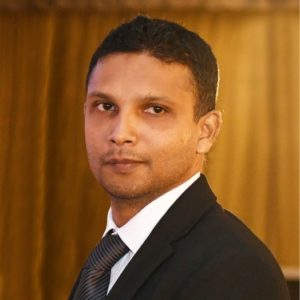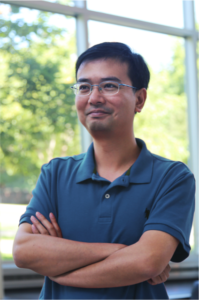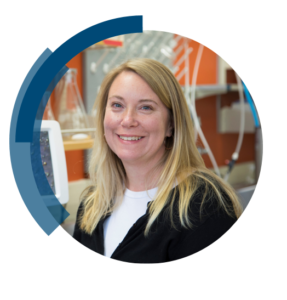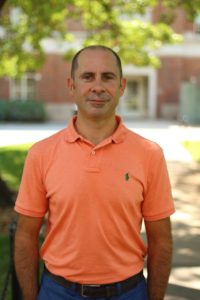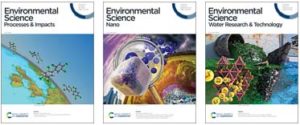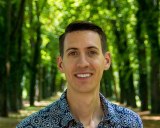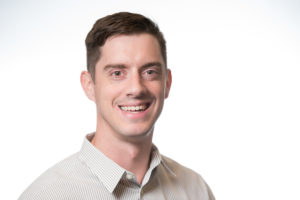 Quin Miller is a Research Scientist (Chemist) at Pacific Northwest National Laboratory (PNNL) in Richland, WA, USA. After completing his Geology undergraduate studies at Whitman College in Walla Walla, WA, Quin worked at PNNL as a geochemistry post-bachelor’s research associate under the mentorship of Senior Research Scientist Todd Schaef. Quin then continued his studies for his Geology PhD at the University of Wyoming under the supervision of Prof. John Kaszuba, conducting dissertation research on the “Geochemistry of Multiphase CO2-H2O-Rock Interactions in Nanoconfined Environments.” During his PhD studies, he returned to PNNL on several occasions as a visiting researcher and also spent four months working with Dr. Gernot Rother at Oak Ridge National Lab via the Department of Energy Office of Science Graduate Research (SCGSR) Fellowship program. After completing his PhD in August 2017, Quin spent two years as a PNNL geochemistry postdoctoral research associate expanding his experimental, analytical, and professional skillsets under the guidance of Todd Schaef and Laboratory Fellow Dr. Kevin Rosso. In 2019, Quin was recognized with an Outstanding Postdoc Award for exceptional contributions to PNNL, with the nomination criteria including productivity, innovation, dedication, hard work, and strong sponsor impact/visibility. Quin was also elected to the Clay Minerals Society Council for the 2020-2022 term, and recently received a 2020 PNNL Outstanding Performance Award for laboratory safety.
Quin Miller is a Research Scientist (Chemist) at Pacific Northwest National Laboratory (PNNL) in Richland, WA, USA. After completing his Geology undergraduate studies at Whitman College in Walla Walla, WA, Quin worked at PNNL as a geochemistry post-bachelor’s research associate under the mentorship of Senior Research Scientist Todd Schaef. Quin then continued his studies for his Geology PhD at the University of Wyoming under the supervision of Prof. John Kaszuba, conducting dissertation research on the “Geochemistry of Multiphase CO2-H2O-Rock Interactions in Nanoconfined Environments.” During his PhD studies, he returned to PNNL on several occasions as a visiting researcher and also spent four months working with Dr. Gernot Rother at Oak Ridge National Lab via the Department of Energy Office of Science Graduate Research (SCGSR) Fellowship program. After completing his PhD in August 2017, Quin spent two years as a PNNL geochemistry postdoctoral research associate expanding his experimental, analytical, and professional skillsets under the guidance of Todd Schaef and Laboratory Fellow Dr. Kevin Rosso. In 2019, Quin was recognized with an Outstanding Postdoc Award for exceptional contributions to PNNL, with the nomination criteria including productivity, innovation, dedication, hard work, and strong sponsor impact/visibility. Quin was also elected to the Clay Minerals Society Council for the 2020-2022 term, and recently received a 2020 PNNL Outstanding Performance Award for laboratory safety.
Read Quin Miller’s Emerging Investigator Series article “Emerging investigator series: ion diffusivities in nanoconfined interfacial water films contribute to mineral carbonation thresholds” and read more about him in the interview below:
Your recent Emerging Investigator Series paper focuses on Ion Diffusivities in Nanoconfined Interfacial Water Films Contribute to Mineral Carbonation Thresholds. How has your research evolved from your first article to this most recent article?
I was fortunate to find a great mentor early in my research career, Todd Schaef, who emphasized the importance of continuing my education, setting measurable goals, assembling a strong research team, and producing focused, data-driven manuscripts. When I wrote my first research paper during my post-bachelor’s research position, my primary concerns were learning to complete an investigation, navigate the publishing process, and having a finished product to show to graduate programs. As my graduate studies progressed and I worked to pin down the scope of my dissertation, my advisor, Professor John Kaszuba, reminded me that many highly technical pursuits aren’t just missing the forest for the trees, but missing the forest for the leaves. I also credit John for giving me a lot of latitude to explore ideas and for greatly influencing my writing and thinking styles, including a willingness to get excited about both the big idea and the associated minutiae.
These days, I continue to work with collaborators to probe interfacial processes with PNNL’s world-unique high-pressure experimental suite, including in situ X-ray diffraction, infrared spectroscopy, and nuclear magnetic spectroscopy. I am also fortunate to be working on a broader range of projects led by Laboratory Fellow Dr. Pete McGrail that include subsurface sensing technology R&D and planned field deployments. I am also able to work more closely with staff from PNNL’s Environmental Molecular Sciences Laboratory (EMSL) user facility, including Dr. Mark Bowden. Importantly, as we demonstrate in our present Environmental Science: Nano article, molecular modelling insights from Dr. Sebastien Kerisit are providing vital molecular-scale insight into reaction mechanisms and processes observed via experiment. This type of experimental/theoretical crosscut is a signature strength of PNNL’s Basic Energy Science Geochemistry program that is led by Dr. Kevin Rosso.
What aspect of your work are you most excited about at the moment?
I am most excited about collaboration opportunities and working with investigators with a diversity of backgrounds, ideas, and research interests. It’s exciting to be at the early stages of a career, surrounded by a vibrant mix of established and early-career researchers. I also looks forward to staying diversified enough that I will someday be tackling problems with scientists that have yet to be born and AI collaborators that have not yet come online. In the short term, I will be co-mentoring two students this summer. I am also excited about the continuing development of our laboratory-based in situ X-ray diffraction capability that will enable us to probe an expanded pressure-temperature-composition space and work with a greater variety of samples. Research conducted with this capability will support several PNNL and DOE programs, including those concerned with nucleation and growth of applied functional materials like metal-organic frameworks and atomically-precise heterostructures. Todd Schaef and I are always interested in new collaborations to take advantage of our “24/7” beamtime with our current setup.
In your opinion, what are the most important questions to be asked/answered in this field of research?
The most important questions concern how to successfully connect disparate spatial and temporal scales, as quantifying ephemeral atomic- to molecular-scale phenomena is vital to understanding coupled societal- and planetary-scale processes whose ebbs and flows will outlast us all. For example, how do we take molecular-scale insights about interfacial mineral carbonation and clay mineral swelling and use this information to not only predict but control the fate and transport of CO2 in a geologic carbon or hydrocarbon reservoir? Successful bridging between of fundamental and applied science will by absolute necessity involve interdisciplinary collaboration. For instance, a research frontier I am excited to explore concerns coupled geochemical, geophysical, and geomechanical phenomena at the nanoscale, which have outsized yet poorly-understood influences on subsurface energy storage and extraction.
What do you find most challenging about your research?
My biggest challenge is finding time to explore all of the ideas that interest me and choose which ones to pursue in depth! Partly it’s a classic, age-old problem: it’s a lot easier to collect data than to process, interpret, and publish it.
In which upcoming conferences or events may our readers meet you?
Given this worldwide health crisis, nothing is set in stone for my conference schedule. I hope everyone can be as healthy, safe, and united as possible during this difficult time. I was scheduled to present at the Spring American Chemical Society Meeting (Philadelphia, PA) on March 25th, but it has been cancelled due to the global COVID-19 outbreak. I plan to present at the June 15-19 Clay Minerals Society meeting to be held at PNNL (Richland, WA), and the abstract deadline for that meeting is March 15th. I am also co-chairing a session at the June 21-26 Goldschmidt 2020 geochemistry conference in Honolulu, HI and will also present at the Unconventional Resources Technology Conference (URTeC), which will be held in Austin, TX from July 20-22. In August I plan on presenting at the Department of Energy Carbon Storage project review meeting (Pittsburg, PA) and the Fall ACS meeting (San Francisco, CA), finally wrapping up the calendar year with the December 7-11 American Geophysical Union annual meeting in San Francisco, CA. I may also be reached via quin<dot>miller<at>pnnl.gov and @quinmiller.
How do you spend your spare time?
I enjoy hiking, skiing, tennis, and reading.
Which profession would you choose if you were not a scientist?
If I weren’t working as a scientist, I would choose a field that promoted curiosity and inquiry about the natural world and our place in it. I would also enjoy working in an emerging markets startup and getting to interact with movers and shakers from around the globe and assist them in connecting ideas, institutions, and researchers.
Can you share one piece of career-related advice or wisdom with other early career scientists?
Never underestimate the power of small habits.











